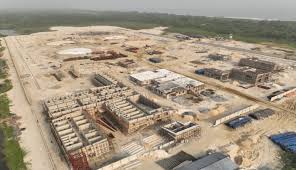

Your go-to source for in-depth coverage of political developments, economic trends, social affairs, and vibrant cultural stories from across the continent.

The commissioning of the terminal signals a new chapter for the Nigerian company, which plans to boost its output from 5,000 to 30,000 barrels per day.
The scale-up is part of a broader development strategy recently greenlit by government regulators.
The new facility — the first of its kind to be constructed domestically in half a century — offers a storage capacity of 750,000 barrels and can handle exports of up to 360,000 barrels per day.
A 23-kilometre pipeline links the terminal to an offshore monobuoy, a configuration designed to optimize export efficiency and reduce logistical costs.
Strategically located near Port Harcourt, the terminal is expected to unlock value across more than 40 marginal oil fields, long considered underutilized assets within Nigeria’s hydrocarbon landscape.
As a diamond sponsor of the upcoming African Energy Week 2025, Green Energy International has positioned this infrastructure as a cornerstone of its contribution to national energy ambitions.
These include raising Nigeria’s total daily oil production to two million barrels and reducing dependence on foreign energy services and infrastructure.
“This terminal is a bold step forward in enabling local capacity while supporting Nigeria’s journey towards greater energy independence and economic resilience,” a Green Energy spokesperson said during the launch.
The development reinforces Nigeria’s broader strategy to harness local expertise in its oil and gas sector while attracting both domestic and international investment into its energy value chain.